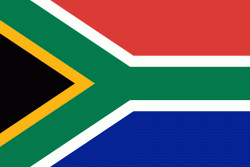Venda language
Venda or Tshivenda is a Bantu language and an official language of South Africa. It is mainly spoken by the Venda people in the northern part of South Africa's Limpopo province, as well as by some Lemba people in South Africa. The Venda language is related to Kalanga, which is spoken in Zimbabwe and Botswana. During the apartheid era of South Africa, the bantustan of Venda was set up to cover the Venda speakers of South Africa.
According to the 2011 census, Venda speakers are concentrated in the following areas: Makhado Local Municipality, with 350,000 people; Thulamela Local Municipality, with 370,000 people; Musina Local Municipality, with 35,000 people; and Mutale Local Municipality, with 89,000 people. The total number of speakers in Vhembe district currently stands at 844,000. In Gauteng province, there are 275,000 Venda speakers. Fewer than 10,000 are spread across the rest of the country — for a total number of Venda speakers in South Africa at 1.2 million people or just 2.2% of South Africa's population, making Venda speakers the second smallest minority language in South Africa, after the Ndebele language, which number 1.1 million speakers.
The Venda language uses the Latin alphabet with five additional accented letters. There are four dental consonants with a circumflex accent below the letter (ḓ, ḽ, ṋ, ṱ) and an overdot for velar ṅ. Five vowel letters are used to write seven vowels. The letters C, J and Q are used only for foreign words and names.
According to the 2011 census, Venda speakers are concentrated in the following areas: Makhado Local Municipality, with 350,000 people; Thulamela Local Municipality, with 370,000 people; Musina Local Municipality, with 35,000 people; and Mutale Local Municipality, with 89,000 people. The total number of speakers in Vhembe district currently stands at 844,000. In Gauteng province, there are 275,000 Venda speakers. Fewer than 10,000 are spread across the rest of the country — for a total number of Venda speakers in South Africa at 1.2 million people or just 2.2% of South Africa's population, making Venda speakers the second smallest minority language in South Africa, after the Ndebele language, which number 1.1 million speakers.
The Venda language uses the Latin alphabet with five additional accented letters. There are four dental consonants with a circumflex accent below the letter (ḓ, ḽ, ṋ, ṱ) and an overdot for velar ṅ. Five vowel letters are used to write seven vowels. The letters C, J and Q are used only for foreign words and names.
Country
-
South Africa
South Africa, officially the Republic of South Africa (RSA), is the southernmost country in Africa. It is bounded to the south by 2798 km of coastline that stretch along the South Atlantic and Indian Oceans; to the north by the neighbouring countries of Namibia, Botswana, and Zimbabwe; and to the east and northeast by Mozambique and Eswatini. It also completely enclaves the country Lesotho. It is the southernmost country on the mainland of the Old World, and the second-most populous country located entirely south of the equator, after Tanzania. South Africa is a biodiversity hotspot, with unique biomes, plant and animal life. With over 60 million people, the country is the world's 24th-most populous nation and covers an area of 1221037 km2. South Africa has three capital cities, with the executive, judicial and legislative branches of government based in Pretoria, Bloemfontein, and Cape Town respectively. The largest city is Johannesburg.
About 80% of the population are Black South Africans. The remaining population consists of Africa's largest communities of European (White South Africans), Asian (Indian South Africans and Chinese South Africans), and multiracial (Coloured South Africans) ancestry. South Africa is a multiethnic society encompassing a wide variety of cultures, languages, and religions. Its pluralistic makeup is reflected in the constitution's recognition of 11 official languages, the fourth-highest number in the world. According to the 2011 census, the two most spoken first languages are Zulu (22.7%) and Xhosa (16.0%). The two next ones are of European origin: Afrikaans (13.5%) developed from Dutch and serves as the first language of most Coloured and White South Africans; English (9.6%) reflects the legacy of British colonialism and is commonly used in public and commercial life.
